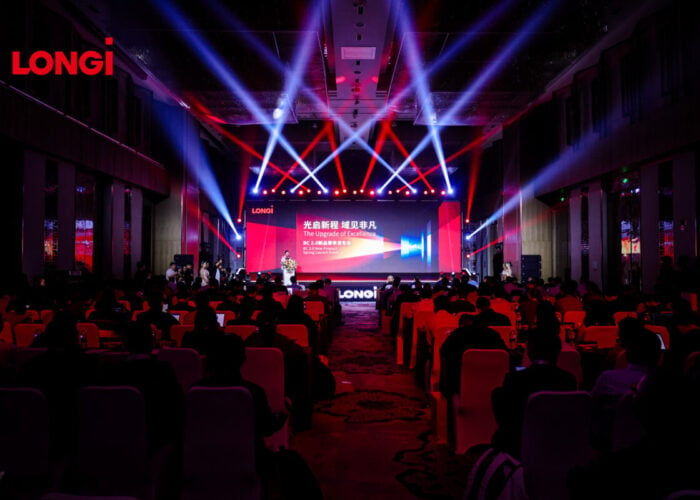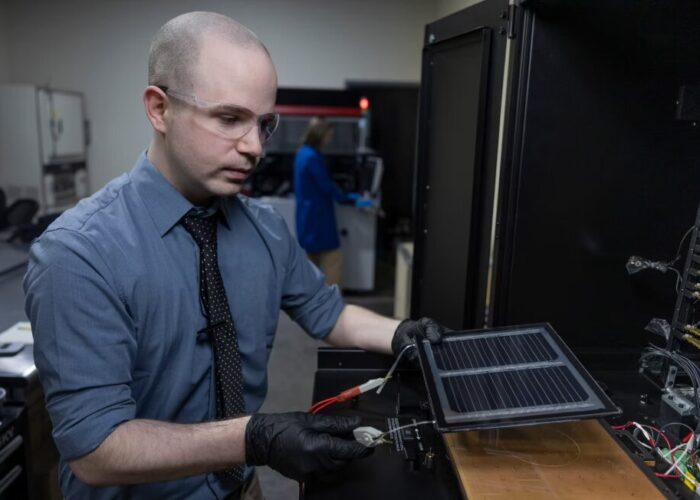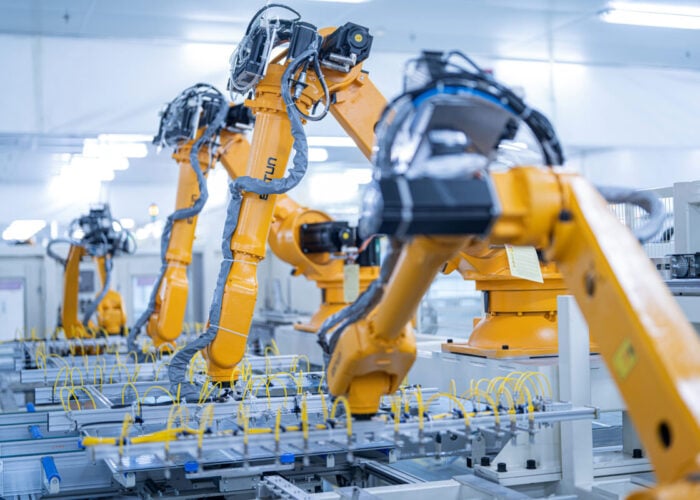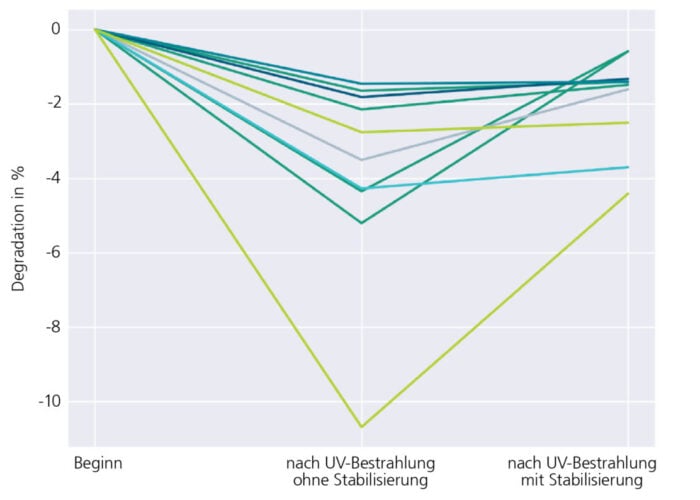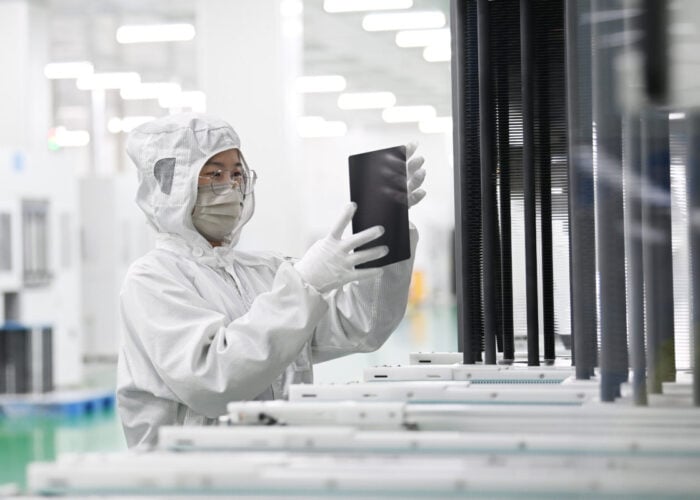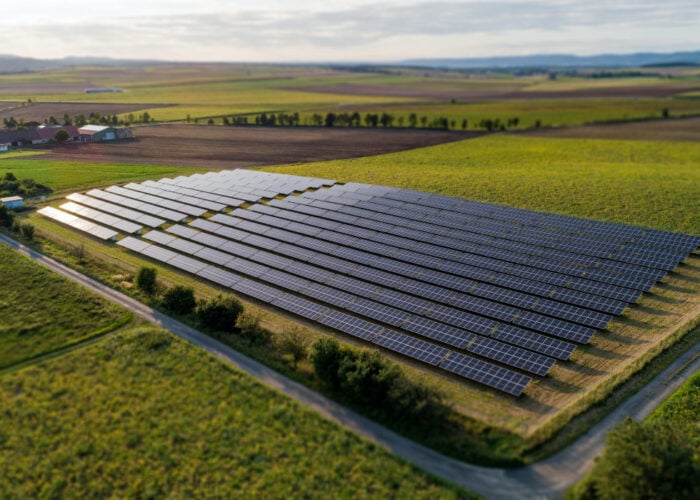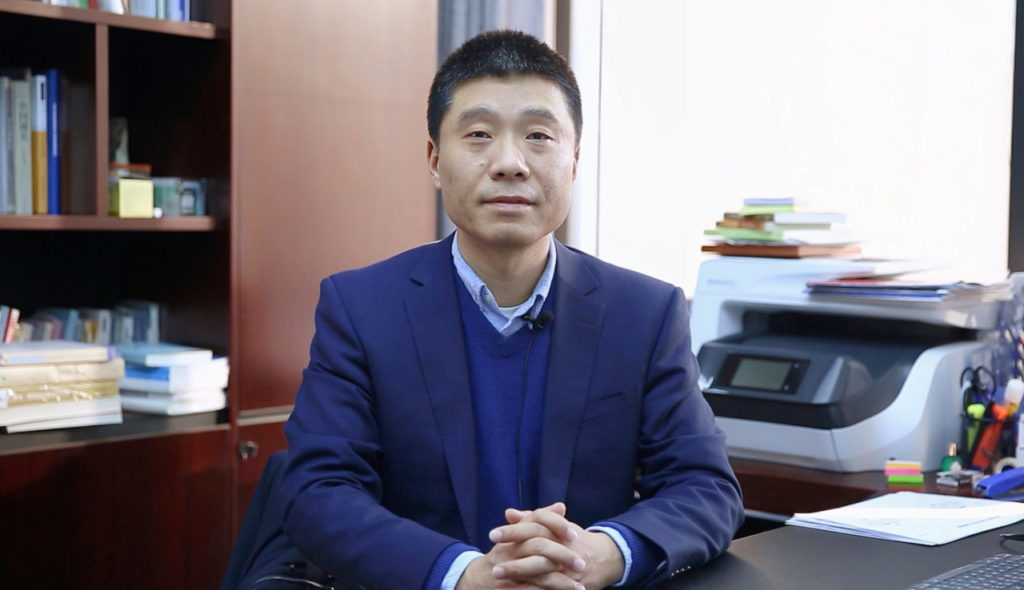
As one of the leading Chinese module manufacturers, JA Solar has been focusing on ramping up its manufacturing capacity and 2023 is no exception. Prior to Intersolar Europe 2023, the company announced a plan to construct a project in China’s Ordos High-Tech Zone, with an annual production capacity of 30GW of ingots, 10GW of silicon wafers and 10GW of modules.
Capacity expansion
Unlock unlimited access for 12 whole months of distinctive global analysis
Photovoltaics International is now included.
- Regular insight and analysis of the industry’s biggest developments
- In-depth interviews with the industry’s leading figures
- Unlimited digital access to the PV Tech Power journal catalogue
- Unlimited digital access to the Photovoltaics International journal catalogue
- Access to more than 1,000 technical papers
- Discounts on Solar Media’s portfolio of events, in-person and virtual
Or continue reading this article for free
According to the company, the project will form a complete vertically integrated industry chain layout in the country’s northwest region, aligning with its future capacity planning strategy. However, the Ordos project represents only a part of JA Solar’s ambitions. Based on already announced expansion plans, 2023 is a year for the company to build on its capacity.
PV Tech reported that JA Solar’s 10GW module project in Xingtai began operations on 29 May 2023.
At Intersolar Europe 2023, sales vice president Tony Zhu told PV Tech that the company’s business in Europe is booming thanks to energy independence and carbon neutrality, while the Chinese and US markets are also growing. When it comes to other regions, Zhu said that JA Solar is looking to further develop its presence in the Middle East, based on local plans for green hydrogen generation. The company has already supplied modules for a number of green H2 projects and is expecting further success in this area since raising its profile by being the sole module supplier for several influencing projects, including an 875MW PV power plant in Qatar, that country’s largest project to date.
Zhu estimated the company’s production capacity to be in the region of 50GW as of the end of last year, with plans underway to expand this to 80GW by early 2024 to deliver against expected module shipments of 60-65GW, a year-on-year growth of over 50%. “We have another 36-40GW of capacity to add this year. 20GW is under construction and expected to be ready at the beginning of next year, so we’re very likely to hit 80GW, with the majority of this TOPCon (tunnel oxide passivated contact).”
In addition to capacity expansions, JA Solar has also applied for more than 1,000 patents as part of its effort to further consolidate its position as an industry leader.
ESG
In 2022, JA Solar invested RMB4.608 billion (USD$637 million) on R&D, establishing independent centres focused on crystalline silicon, cells, modules, systems and core technologies in the Chinese cities and provinces of Xingtai, Hebei, Yangzhou and Jiangsu.
Zhu stressed that the company remains fully committed to its sustainability and ESG (environmental, social and corporate governance) goals. In terms of the energy management category, it continues to promote innovation and improvement in energy efficiency, emission reduction and resource conservation. Last year, it used 1,148.93GWh of clean energy, with the installed capacity of the group’s self-consumption power stations reaching 50MW.
Looking ahead, JA Solar will focus on enhancing its TOPCon capabilities, but will also continue to develop heterojunction (HJT). “We’ll have one line set up for a trial period, and this will reach GW level after the trial rounds,” Zhu explained.
Chinese solar companies have been ramping up their capacity. As of May 2023, they added 61.2GW of PV capacity this year, according to China’s National Energy Administration. In May alone, China added 13GW of capacity. Moreover, from January to May, the country’s cumulative installed power generation capacity reached 2.67 billion kW, representing a year-on-year growth of 10.3%.
PV Tech asked whether such high investment and installed capacity would lead to excess capacity in the country, but Zhu was confident that high quality products and services will still be in high demand.
“The solar industry is still technology-driven. Demand for new high efficiency products is strong, but obsolete products will be out of the market. That’s why we believe that, in the premium, fastest growing markets, we won’t see excess supply,” he concluded.
New product
Prior to Intersolar Europe 2023, JA Solar launched its new n-type DeepBlue 4.0 Pro module at SNEC.
DeepBlue 4.0 Pro adopts cells cut from the n-type rectangular silicon wafer size independently developed by JA Solar, featuring long lifespan and low oxygen content. Combined with its independently developed n-type passivation contact Bycium+ cell technology, the open circuit voltage of the cell reaches 725mV and the cell efficiency in mass production 25.3%.
It meets the demand for a number of applications, including residential and commercial and industrial rooftop systems and utility power plants, thanks to its compatibility, with lengths of module including 1,762mm, 2,333mm, 2,382mm and 2,465mm.

